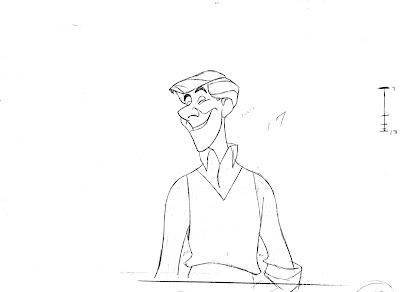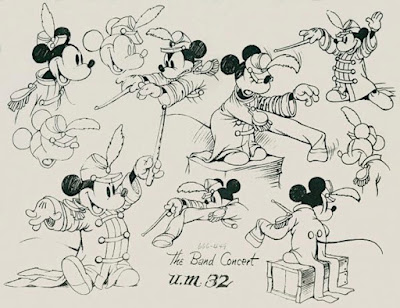Bambi was widely released in US theaters on August 21, 1942. The film lost money in its first outing, partially because foreign markets were cut off due to WW II.
The critics weren't helping either, as they resisted the movie's realism. "The film lacked magic" was one reviewer's opinion.
Stuff like this baffles me. The artists' dedication and sincere filmmaking is evident in every frame.
The movie's art direction is magic, the music is magic and the animation...don't get me started.
Luckily Bambi became a huge hit in re-releases over the years, and is now considered a classic and a masterpiece.
I believe this watercolor painting featuring Bambi, his mother and Friend Owl is by Mel Shaw.
The following story sketches are the work of Marc Davis, who spent years helping to develop the plot line before starting his animation career with Flower, the skunk.
I believe I have posted this model sheet before. Just a reminder of the film's drawing as well as animation virtuosity.
Louie Schmitt drew this terrific model sheet. Super appealing. I posted more of his mouse designs here:
https://andreasdeja.blogspot.com/2013/04/louie-schmitt.html
Young child actor Donnie Dunagan (Bambi) eats out of a Snow White bowl, as he ignores onlooking movie stars.
Peter Behn (Thumper) and Donnie Dunagan promoted the film's 75th anniversary last year.








































